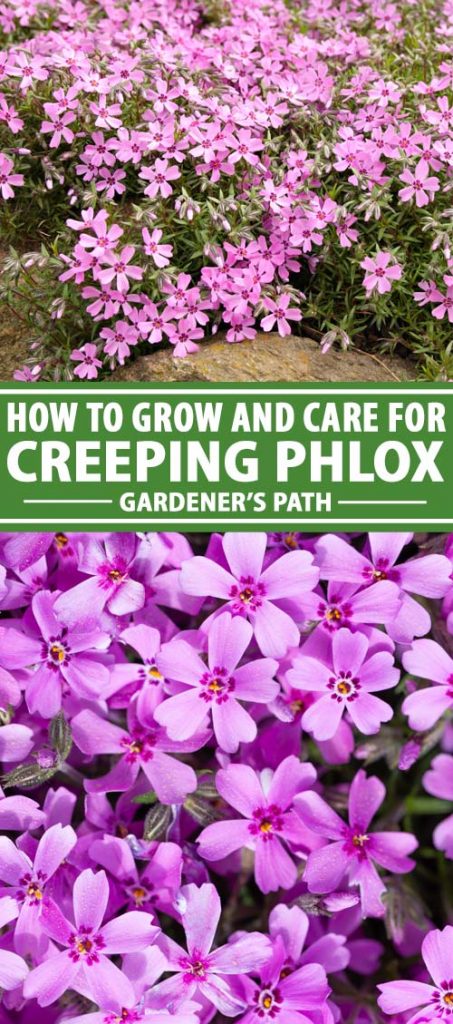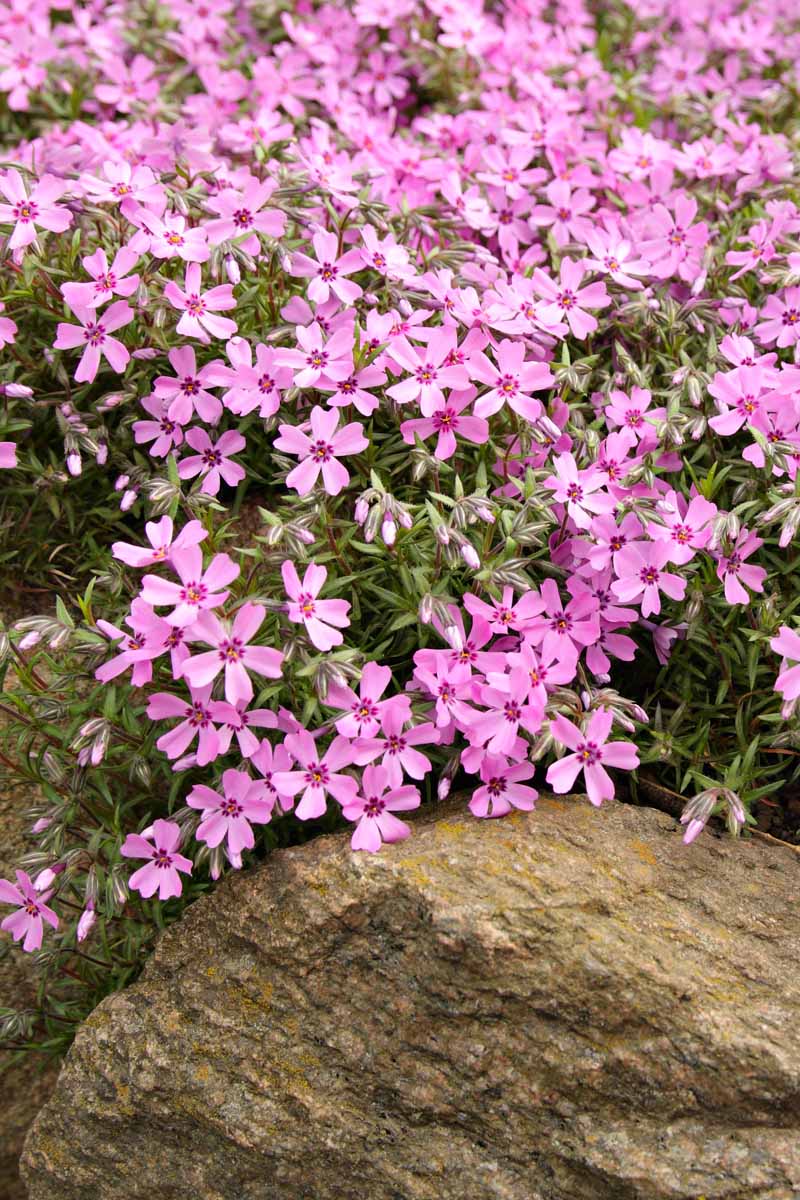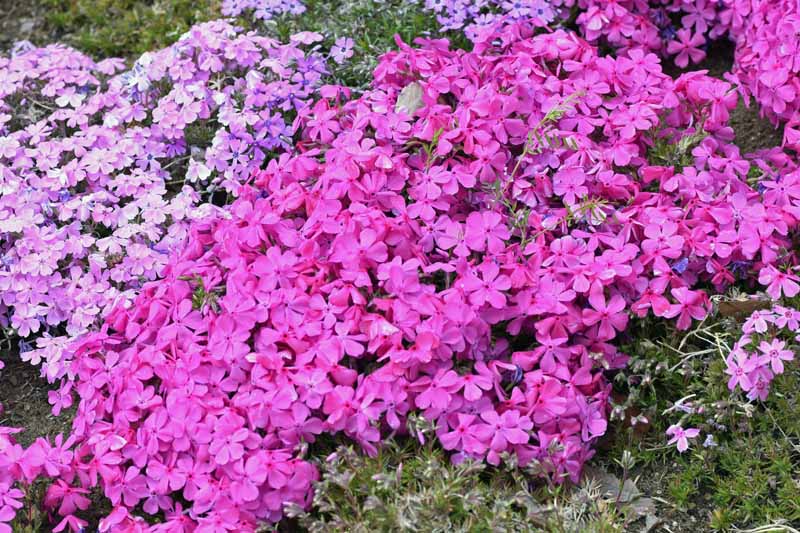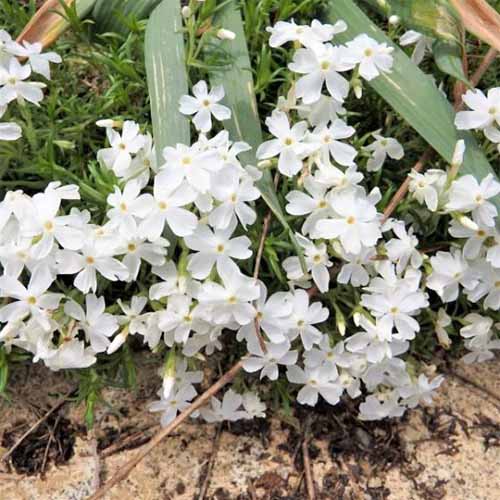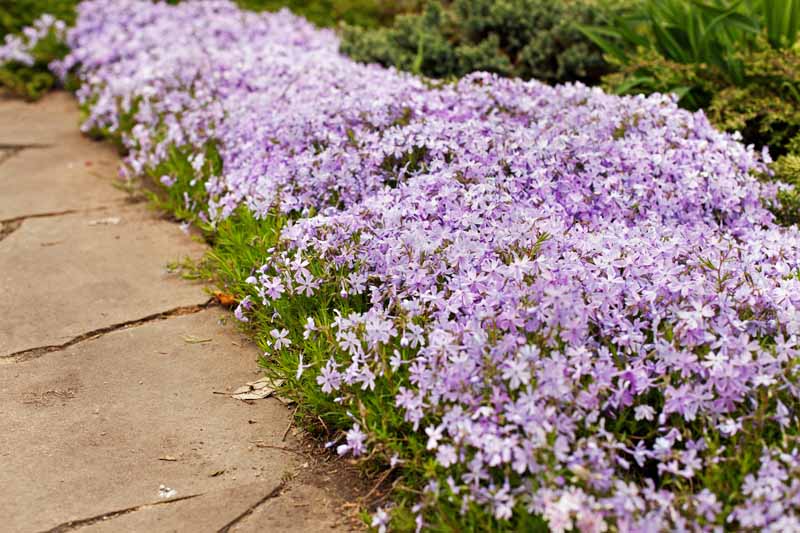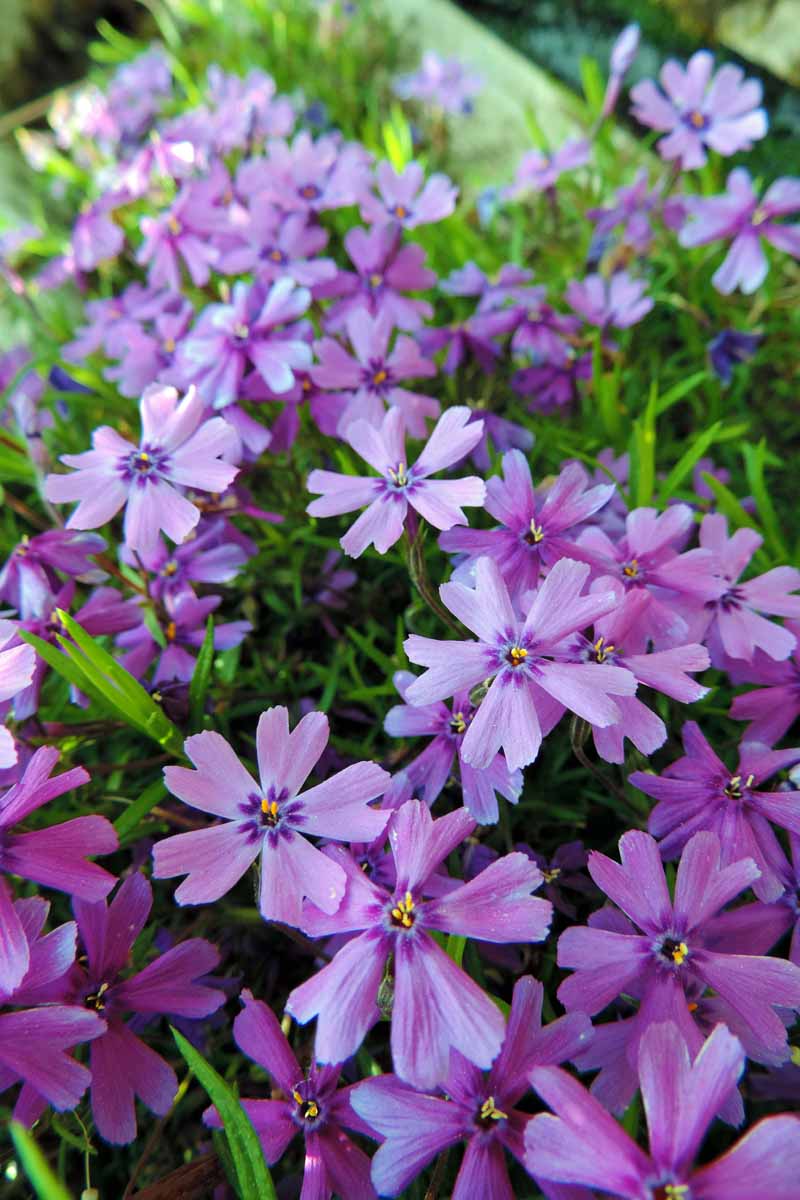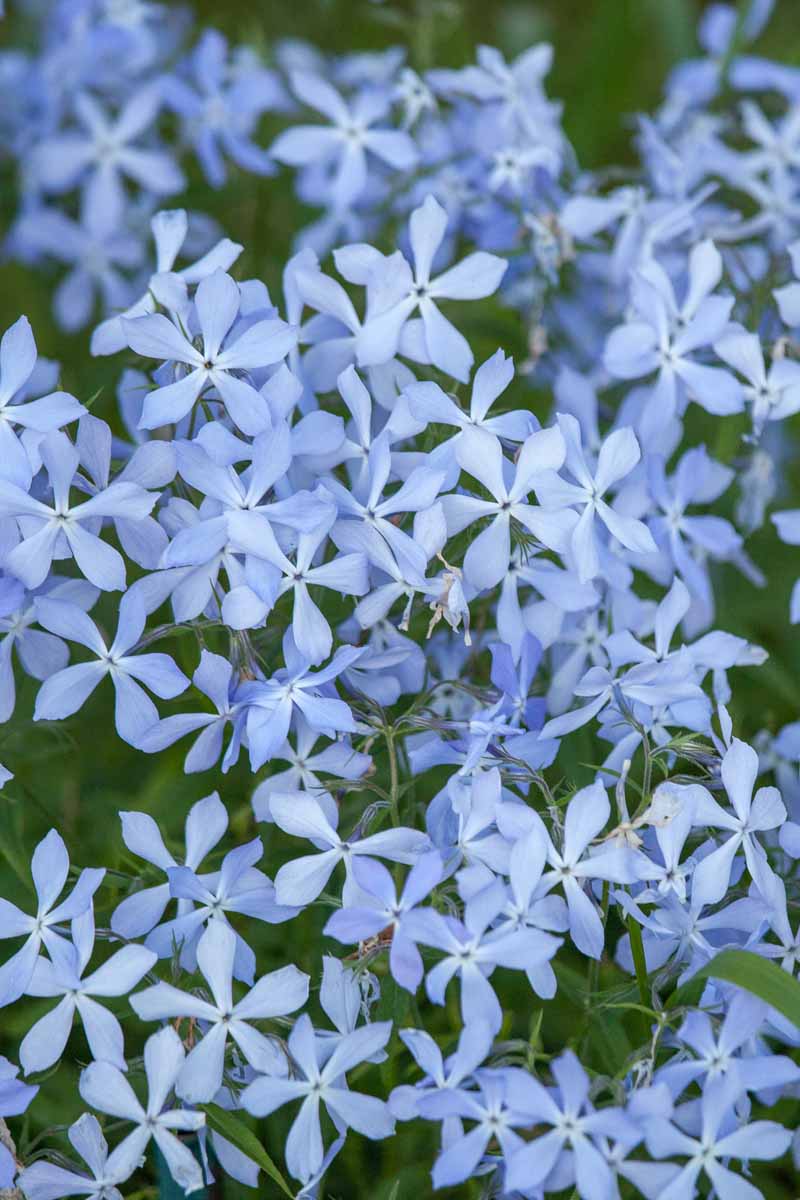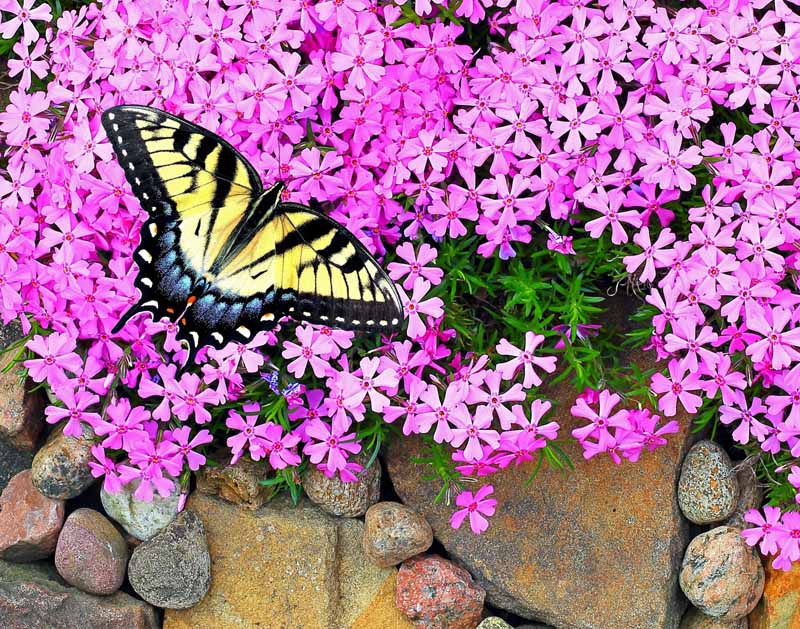In fact, when I first heard of it, I was pretty sure that it wasn’t going to be a particularly pretty plant at all. But with bright purple, pink, white, and blue stars of flowers set against vibrant green foliage, it’s clear that the name doesn’t do justice to this delightful candy-colored plant (and perhaps I shouldn’t be so quick to judge!). We link to vendors to help you find relevant products. If you buy from one of our links, we may earn a commission. In fact, both types are up to the task. There are actually two different species that go by this common name. So, if you’re looking for a flowering ground cover that is both beautiful and easy to grow, look no further!
Cultivation and Historical use
Creeping phlox, P. stolonifera,and moss phlox, P. subulata, are both perennials originating from North America, and both are firm favorites among gardeners.
And clearly, gardeners aren’t the only fans of this plant. Native Americans even named April’s full moon – the “Full Pink Moon” – after the flower, heralding the arrival of the swathes of purple and pink which, as early bloomers, signify the start of spring. The vibrancy of this plant is even reflected in its name – the genus name phlox is derived from the Greek word meaning “flame,” referring to the intense color of its flowers.
Phlox stolonifera vs. Phlox subulata
When I was first researching this plant, I got a bit confused as to which phlox species was the “true” creeping phlox. I found that, technically speaking, P. stolonifera is a “creeping phlox” and P. subulata is a “moss phlox.” But that thanks to the fact that both species are remarkably similar, both in appearance and in biology, the two common names are often used interchangeably. Both are semi-evergreen ground cover plants that bloom with beautiful flowers in spring. That being said, there are a few notable differences between the two. For instance, P. subulata only reaches a height of around 6 inches, whereas P. stolonifera can grow to around double that. P. subulata also has much more needle-like leaves, wheres P. stolonifera has more of a mixed foliage. However, the main difference between the two is that, whilst P. stolonifera tolerates partial shade, P. subulata is very much a sun-seeker (I can empathize with this), and so only thrives in full sunlight. Both are such similar plants that they are often confused. If I really had to choose between the two, I’d say P. subulata might just about win out as a ground cover, thanks to that fact that it’s shorter and tends to bloom more densely. But both options can bring beauty to the garden, when planted under the right conditions.
An Easygoing but Disorderly Ground Cover
Both phlox species are not particularly fussy, although they prefer well drained, humus-rich soil. Growing only 3-8 inches tall (7-20 centimeters), but spreading as wide as 9 inches up to 2 feet (22-60 centimeters), creeping phlox is an ideal ground cover and companion plant. Although it is perfectly at home on flat land, to appreciate this plant in all its colorful glory, it might be best to place it on a slope, where the blooms can be properly seen and enjoyed.
Slopes also provide an ideal home for phlox for two other reasons:
- It tends to favor well-drained soils.
- It’s well known for helping to prevent erosion, making it perfect for growing in more sensitive areas like slopes. There is one thing to watch out for when planting. As the name suggests, this is a plant that creeps, and it is a very successful creeper at that. For some gardeners, this is ideal – it is a perennial plant that will spread to cover every inch of empty space. But if you’re the type of gardener that prefers well behaved and orderly plants, this might not be the best one for you.
How to Ensure an Influx of Phlox
It’s easy to grow P. stolonifera and P. subulata from seed, cuttings, and transplants. Generally very hardy and adaptable plants, the most important consideration is probably color. With a variety of vibrant shades of pink, purple, and blue to choose from, this can be a tough decision. Named after the Appalachian Mountain ranges from which the plant originates, two of the most common varieties of P. stolonifera are ‘Blue Ridge’ and ‘Pink Ridge.’ There is also a white variety called ‘Bruce’s White’ that’s popular among gardeners, named after the wildflower enthusiast Bruce Chin. ‘Candy Stripe’ Creeping Phlox Plant
‘Snowflake’ Phlox Or for something more delicate, check out the ‘Snowflake’ variety, available from Nature Hills Nursery. From seed, the main thing to remember is to use a potting medium with good drainage, preferably comprised of perlite and coarse sand granules. It’s best to seed them about 2 months before the last frost date. Once the plants start to emerge, it’s important to give them enough sunlight – around 12 hours a day. However, it is probably easier to grow from cuttings or transplants than it is from seeds. Luckily, this plant can be found easily in nurseries, or you may be able to take some cuttings from a friend. Because of its easygoing nature, this plant will happily take to the soil in both spring and autumn.
The main thing to keep in mind is the planting distance, with a recommended spacing of around 15 to 18 inches between each. Creeping phlox, as the name suggests, creeps along the ground and spreads with long, leggy runners. It’s best to plant in staggered rows, allowing enough room for each plant to occupy the space around it. There’s nothing too complicated or technical about planting – just try to keep the top of the root ball level with the ground, be sure to give each plant a good first soaking to settle it into its new home, and you should be good to go.
Growing Tips
P. stolonifera and P. subulata are adaptable and versatile plants which, when situated in the right place with the right amount of sun exposure, will thrive without any special care. There are, however, a few things you can do to help these flowers along.
Both P. stolonifera and P. subulata take kindly to either a late winter or early spring feeding with a slow release fertilizer or organic plant food, which helps promote strong and vigorous growth. Don’t forget: it doesn’t like soggy soil, so generally speaking, it’s best to keep watering to a minimum. Of course, even when well established, phlox benefits from an extra watering during especially hot summers, or if you live somewhere that gets an average of less than 1 inch of rain per week.
Maintenance
Although not strictly necessary, a bit of trimming from time to time does this plant some good.
Stems can be cut back at a couple of different times throughout the year: once after flowering to encourage a second bloom, with an occasional winter cut-back to keep the plant happy, healthy, and raring to go, ready for the following spring. Cutting the stems back like this also encourages their naturally long growth to become shorter and woodier, creating more dense flowering.
Propagation
Creeping phlox is easy to propagate through division, stem cuttings, or rooted stems. Cuttings, if done right, are a particularly easy option to propagate, as they root easily after a few months.
All you need to do is cut a roughly 6-inch-long section, either from a rooted stem or a lateral shoot near the tip. Make sure there’s at least one leaf and no flowers on the cutting. Always make cuttings with a clean, sharp tool to prevent infection. Creeping phlox roots so well that it doesn’t even require rooting hormone, although this product will help speed along the process if you’re keen to ensure success. Just place the cuttings in a potting mixture with good drainage, using perlite and/or coarse sand, and you’re good to go.
One thing to bear in mind is timing, which is everything with this plant. It’s recommended to take cuttings in spring or autumn, although it seems to take root particularly well in autumn after it has flowered. You can also propagate P. stolonifera and P. subulata easily through division. It is best to divide in early fall when temperatures are cool. It’s recommended to divide this plant once every few years to keep it healthy, especially if it seems to be blooming less than usual. Root cuttings should be taken just before the arrival of new spring shoots. Root cuttings of around 1.5 inches should do the trick, and they should be fully inserted into firmed compost, taking care that the end furthest from the root tip is facing up. Top tip: when taking root cuttings, you can nick the top of the cuttings to indicate which end is which, to make sure you don’t get mixed up.
Managing Pests and Diseases
This beautiful bloomer can be a bit susceptible to mites. To stop any problems from “creeping” up on you, it is important to act fast, as soon as you spot signs of trouble. This can usually be easily achieved by using an organic insecticidal soap.
In moist conditions, P. stolonifera and P. subulata can also suffer from powdery mildew. The best way to ensure that this isn’t a problem is to keep watering to a minimum, although this can also be quite effectively prevented via occasional pruning to promote good air circulation.
Creeping Phlox Quick Reference Growing Guide
Time to Get Growing!
With its vibrant flowers and easygoing nature, there is no doubt that this beautiful perennial will quickly creep its way into both your garden and your heart, whichever species you choose!
Whether you’re planting it to cover a slope, attract pollinators to your yard, or to add a splash of vibrant color to a partly shady corner, that’s a cultivar that’s up to the task. And with little maintenance required, you’ll be glad you chose these beautiful blooms. What’s your favorite variety? Do you have any questions that we didn’t cover here? Feel free to reach out in the comments section below – we’d love to hear from you!
